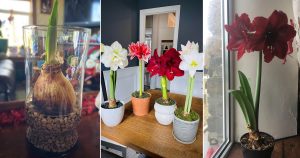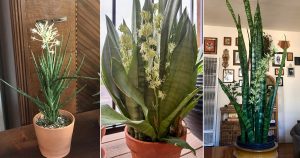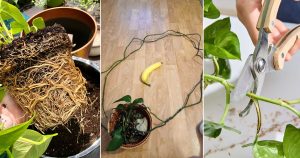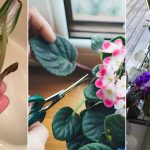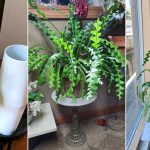I recently Tweeted about fertilizing container gardens and asked for feedback about what other gardeners do. I received many different responses, including:
- @containergarden: I use fish emulsion and seaweed combo. Also mix in Bradfield Organics’ All Purpose fertilizer into soil.
- @DebraLBaldwin: For succulents, add 1 T timed release fertilizer per gallon of cactus mix. Liquid fert @ 1/2 strength during growing season.
- @MulchMaven: Container fert.: growing mix w/worm castings and slow release fertilizer works great for me! Also bat guano. <not kidding>
- @Elle_Ann: When potting, I mix good organic soil mix w/ worm compost. Sometimes also add organic 4-4-4 (powder) but not consistently.
- @VantagePointeSD: Fish emulsion! It just smells like it’s working magic! Often add coffee grounds, too.
This isn’t really the time of year to fertilize anything other than indoor plants (at least not for those of us in the Northern Hemisphere). But for some odd reason I’ve been thinking about fertilizers lately. Probably because my plants are totally confused by the weird weather we’ve been having and it’s been hard for me to resist giving them fertilizer when I see them putting out new leaves, flowers and fruit.
Slow Release Fertilizers
As you can see from the responses, a lot of people like using slow release fertilizers, but they’re not my ideal. I always forget when I mixed it in and when I should add more. Also, if you get a lot of rain, it seems to me that the slow release fertilizer would be “over-activated” and release all of its fertilizer at once. Plus, organic slow release fertilizers are hard to come by.
I’m not saying I never use slow release fertilizer, I use slow release granules when potting up plants for people I know won’t fertilize them (love you anyway mom!). And a lot of times I’ll throw some in when I first pot up a plant for my own garden. I figure it gives the plant a good start to have consistent fertilizer while it’s getting established. But slow release is not my fertilizer of choice.
Liquid Fertilizers
If people can have a “favorite” type of fertilizer, mine is liquid fertilizer that you add to your watering can. It doesn’t get easier than adding a cap full of seaweed extract to my watering can as I make my way around my little garden. No need to dig the fertilizer in or spread it around. Just water your plants as usual.
Check out Your Local Hydroponics Shop
There are lots of different kinds of liquid fertilizers out there to experiment with. If you have a hydroponics shop in your neighborhood, they are usually well-stocked with liquid fertilizers (hydroponics = growing plants in water containing dissolved nutrients). Granted, you do have to elbow your way past all the people trying to pretend that they’re not buying pot growing supplies. And your neighbors may assume that you have a little weed growing operation in your apartment. But life would be boring if you weren’t a little scandalized from time to time.
Anyway, if you have the guts to walk into a hydroponics shop (even if you don’t and you’re going to shop online), these are some liquid fertilizers you might find:
- Seaweed/Kelp Extract – Seaweed contains all major and minor plant nutrients, and alginic acid, auxins, and at least two gibberellins. I have no idea what most of that means but my plants like it and I use it as a general purpose fertilizer. Apparently in addition to giving plants the nutrients they need, seaweed also improves the water retaining ability of your soil.
- Fish Emulsion – Comes from fish processing waste. If you’re a vegetarian or vegan for ethical reasons you should consider whether that fits with your values. Mine is 4:1:1 (nitrogen:phosphorus:potassium) and so are all the ones I can find online. When a fertilizer has more nitrogen than the other nutrients it usually means it’s meant to encourage a plant to put out more leaves and grow taller. You should also know that fish emulsion stinks to high heaven.
- Flower Boosters – I often see liquid fertilizers meant to encourage booming. One brand that comes to mind is Tiger Bloom. Fertilizers that encourage blooming and bud formation have a low first number (nitrogen), and high second number (phosphorus) and a medium last numner (potassium). Sometimes I also see flower fertilizers that have progressively larger numbers, like 3-4-5. You start applying it as soon as you see flower buds start to form.
- Vitamin B – Yep, the same vitamin B1 that people need, plants like too. Liquid vitamin B meant to “fertilize” plants even smells like vitamins meant for people. It is often recommended to help ease transplant shock, though you should know that some plant scientists contest B1’s effectiveness.
- Root Stimulators – Usually they have no nitrogen or phosphorus and only potassium (and other “micronutrients”), so the numbers are 0-0-.7, or something similar. These are great if you are growing your own seeds and you water them from below (i.e. the seed starting pots are sitting in a tray of water and the plants suck up the water from the tray). It’s also useful when starting cuttings.
What type of fertilizer do you like using?

